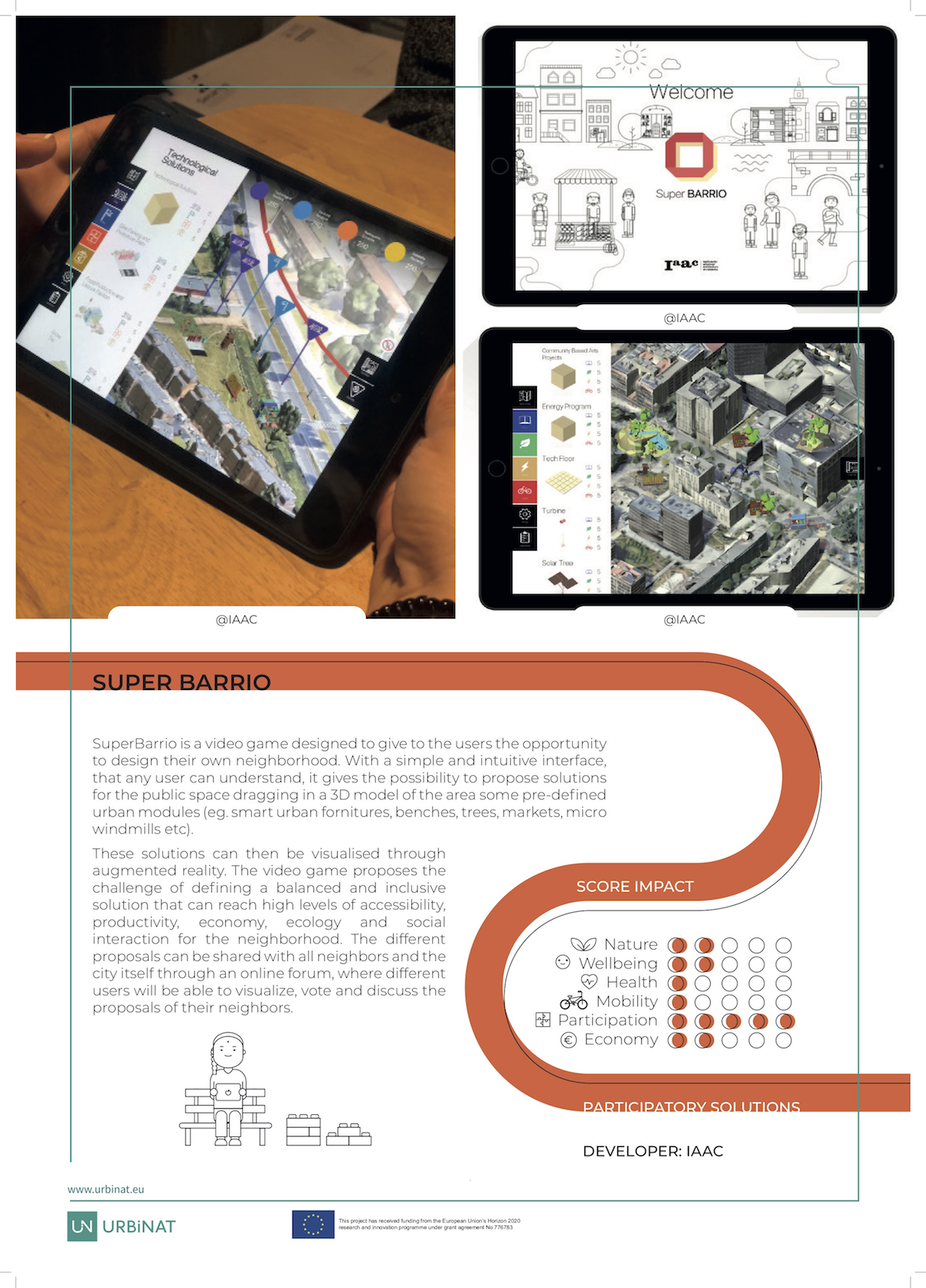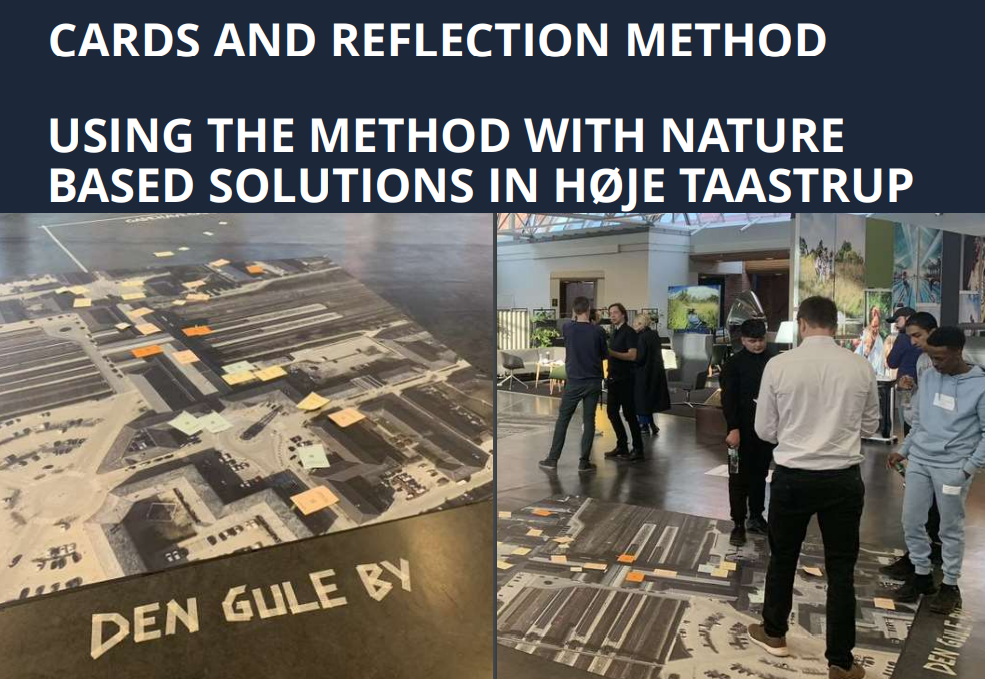Digital Enablers Realising Constructive Participation
Participation or Citizen Engagement are all too often presented as the go-to solutions to enable communities and cities to respond to the livelihood concerns of citizens. Yet a steady flow of studies and observers have pointed to associated downsides, and the risk that participation can lead to hollow or unsatisfactory outcomes. URBiNAT’s report, “Portfolio of Purposes, Methods, Tools and Content: Forming Digital Enablers of NBS,” takes note of such risks while considering how digital enablers may offer help in overcoming them.
Participatory practices can be viewed favourably as lending citizens – not least citizens from more vulnerable or disenfranchised sections of the population – a voice. However the same practices, if not implemented properly, can also result in the elevation of populist agendas, or campaigns of influence based on one-sided perspectives, “cherry-picking” benefits readily at hand. Linked to this, participatory practices may deflect attention away from more profound, long-term considerations. Warnings by scientists and experts that certain patterns of consumption are excessive, or that certain types of urban expansion are unsustainable, may go unheeded.

Digital enablers are not a panacea for overcoming such risks, as can be seen from the explosion of misinformation and manipulation brought about by the social media revolution. News coverage in many countries around the world has been reduced to short-form, shallow messaging, benefitting narrow commercial interests and, in some cases, leading to the rise of autocratic regimes.
Digital communication brings about multifaceted opportunities, however. Purposefully deployed, so-called digital enablers of participation may help address the issues at hand.
For one, digital enablers may be used so to compel local, regional and national authorities to be more transparent and efficient, including when it comes to consultations with citizens and diverse interest groups.
Digital enablers can be usefully deployed to bring about a maturing of quality assurance, accumulating shared experience of processes that enable success in raising user involvement as well as the effective hearing of expertise and stakeholders.
Decades ago, Healy (1999), among others, argued that extended peer communities had to be created as a basis for establishing the trust required for coming to grips with, and addressing, complex societal problems. Online communication vastly expands the speed and efficiency with which this can be achieved, paving the way for constructive peer-processes and exchanges on terms that facilitate compromise.
Digital enablers can be devised to promote teamwork (de Vries et al., 2018), and to instigate bonding between social networks (Guerrero et al., 2015). Dialogue and cooperation can be promoted within local communities, while reducing dependency on government (URBACT, 2019). Coming into play here are design approaches, operational efficiency, and participatory processes operating at community, or group level, with social relations awarded strong attention (Nam and Pardo, 2011).
A related aspect here is the scope for digital enablers to shift the perspective, by going beyond a narrow “what is in it for me?”, to discover “what is in it for us?”. Studies of vulnerable groups point to a combination of challenges and negative impacts of intensified exposure to digital communication, but also to the scope for remedial action. An example is digital support targeted to the needs of a child who suffers increased vulnerability due to the absence of an educated and caring parent, through means that strengthen the social fabric surrounding the child along with mechanisms for offering protection in case of an emergency.
In this way, technological advances need to be accompanied by the ambition and capacity to fulfil the organisational requirements for sustainability. To succeed, leadership arrangements need to evolve so as to promote shared objectives and responsibilities (Johnson et al., 2015).
The willingness and capacity to embrace such aspects is, in effect, shifting from being a side-affair to becoming a watershed factor, a defining tenet for smart city designers, urban planners.

CLICK HERE to read the other articles in this blog series
Download the full report
D3.3: Portfolio of Methods, Tools and Content - Forming Digital Enablers of NBS
This deliverable has been framed for the objective of collecting and structuring information as a basis for enhanced understanding of how to apply so-called “digital enablers” to support the co-creation process around NBS and healthy corridors in URBiNAT cities, and to draw wider lessons thereof. Despite the opportunities offered by digitalisation, as observed in ambitious plans for the development of smart cities, urban planners continue to struggle in addressing serious outstanding issues, including fragmentation and lack of engagement by disadvantaged groups. Although the application of Information and Communication Technologies (ICT) will not by itself resolve these issues, the constructive application of digital enablers can be greatly helpful. Building on the experience at hand and linking to the evolving experience of URBiNAT cities, this report sets out to cast new light on ways forward in this respect. The audience includes members of the URBiNAT project along with others interested in the project and lessons on how to address the issues at hand.
Further reading
- de Vries, J. R., van Bommel, S., and Karin Peters (2018). ”Trust at a Distance—Trust in Online Communication in Environmental and Global Health Research Projects”, Sustainability 10(11), 4005. https://doi.org/10.3390/su10114005
- Guerrero, A. M., Ö. Bodin, R. R. J. McAllister, and K. A. Wilson. (2015). “Achieving social-ecological fit through bottom-up collaborative governance: an empirical investigation”, Ecology and Society 20(4):41. http://dx.doi.org/10.5751/ES-08035-200441
- Healy, S. (1999). Extended peer communities and the ascendance of post-normal politics, Futures 31, pp. 655-69.
- Johnson, S. L., Safadi, H., and Faraj, S. (2015). “The emergence of online community Leadership”, Information and Organization (July), pp. 35–68.
- Nam, T. and Pardo, T. A. (2011). Smart city as urban innovation: Focusing on management, policy, and context. In Proceedings of the 5th international conference on theory and practice of electronic governance, pp. 185–94.
- URBACT (2019). “Citizen Participation & Citizen Engagement, the construction of a dialogue in the Urban Environment”. https://urbact.eu/citizen-participation-citizen-engagement-construction-dialogue-urban-environment
- URBiNAT (2021). Deliverable 3.3 – Portfolio of Methods, Tools and Content: Forming Digital Enablers of NBS, IKED, Malmö.
Comments welcome!
Welcome to raise comments, suggestions and questions here. We are curious to learn about your views and experiences, for example in regard to the following questions:
- What measures are most important to ensure constructive genuine citizen participation in decision-making?
- How can digital enablers be deployed most usefully in support of social cohesion and mutual trust? What, if any, are the main risks?
- Which means are most effective in building enhanced apacity for shared decision-making?





